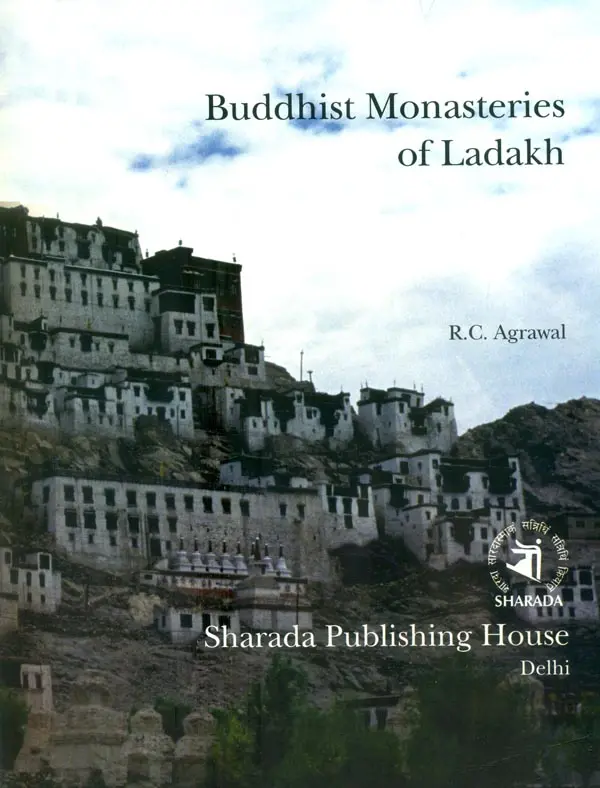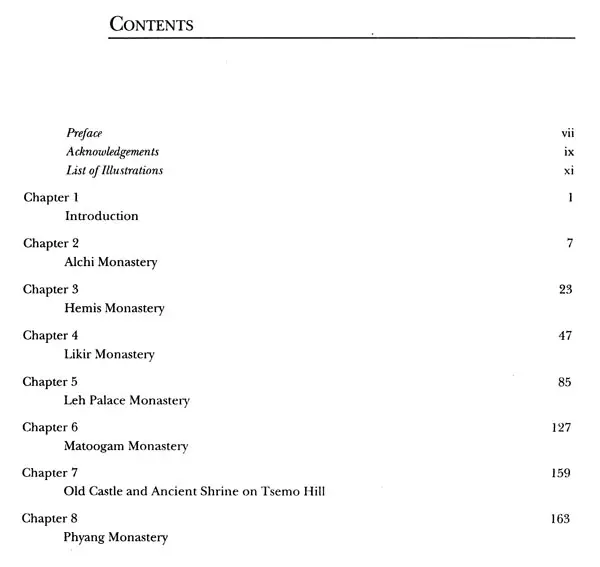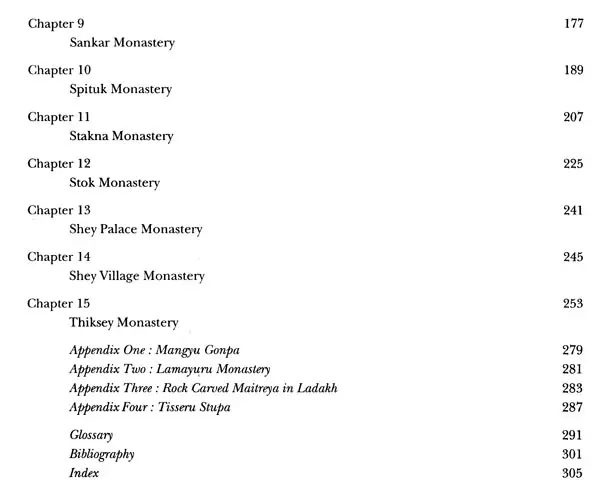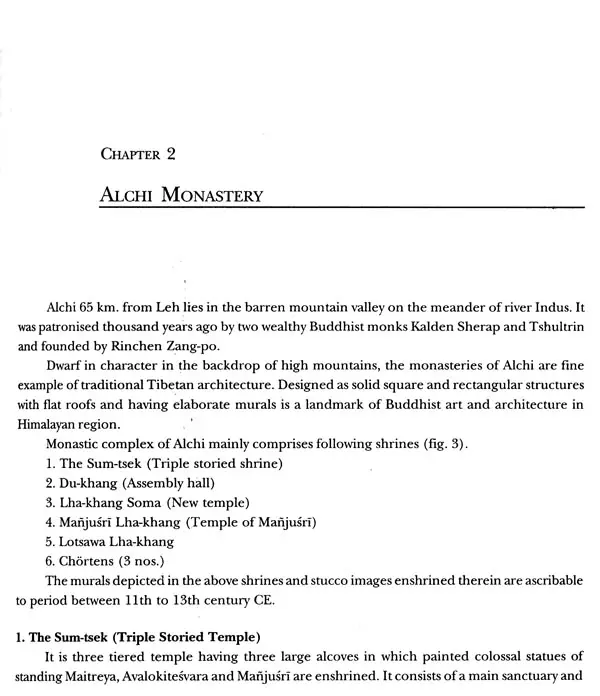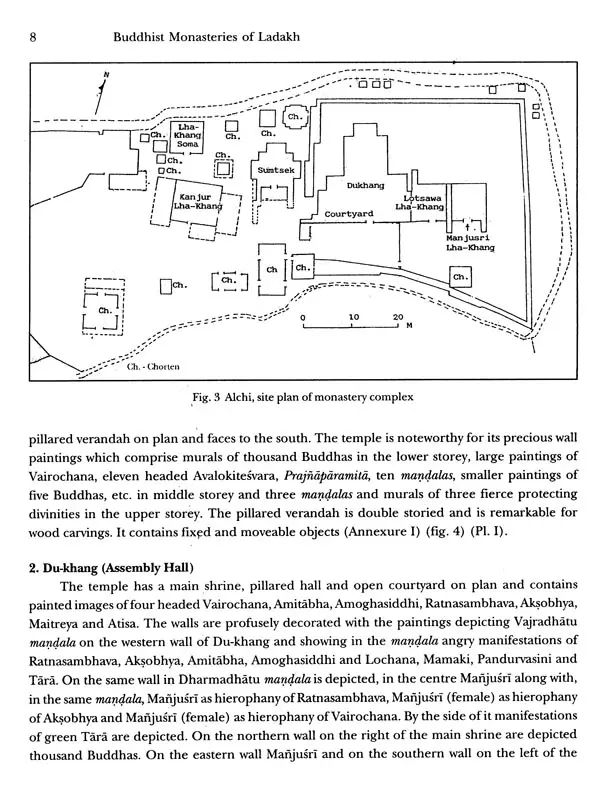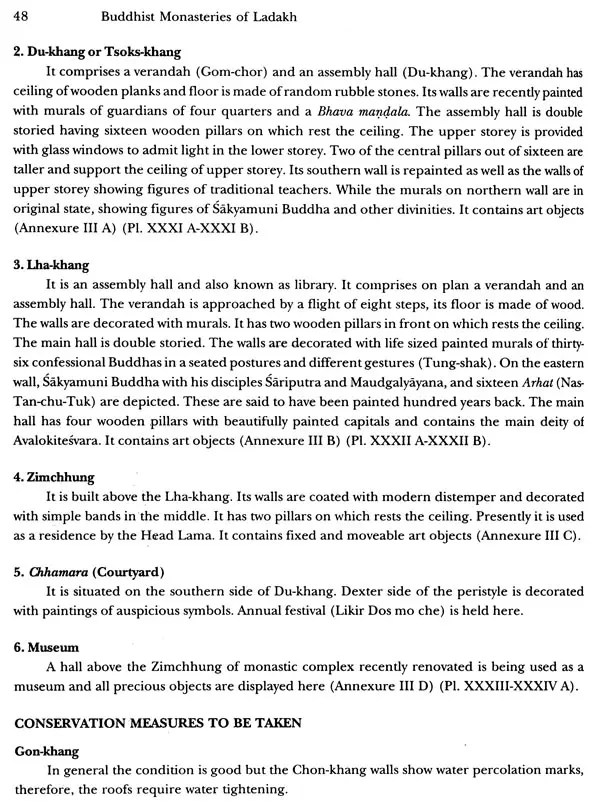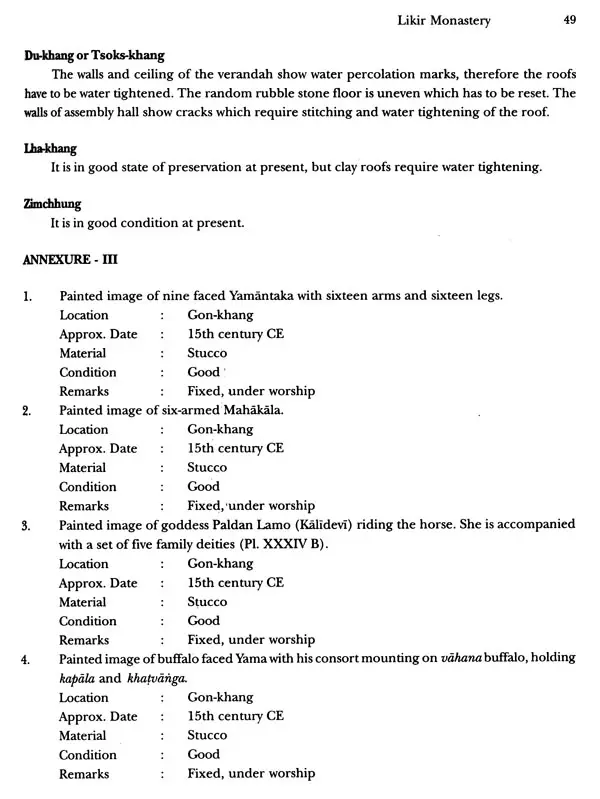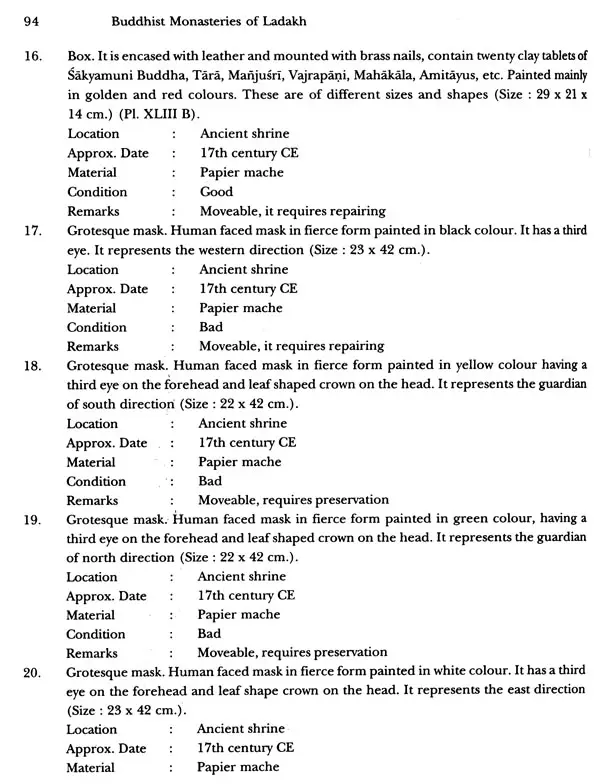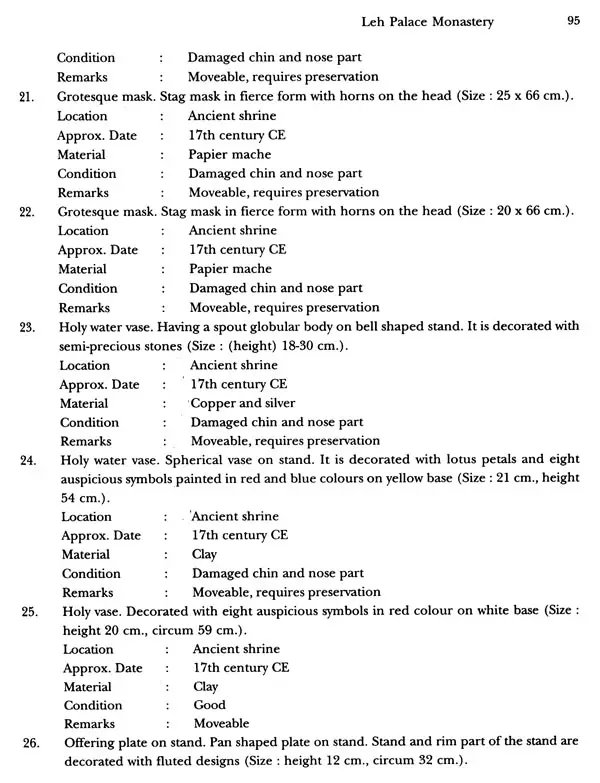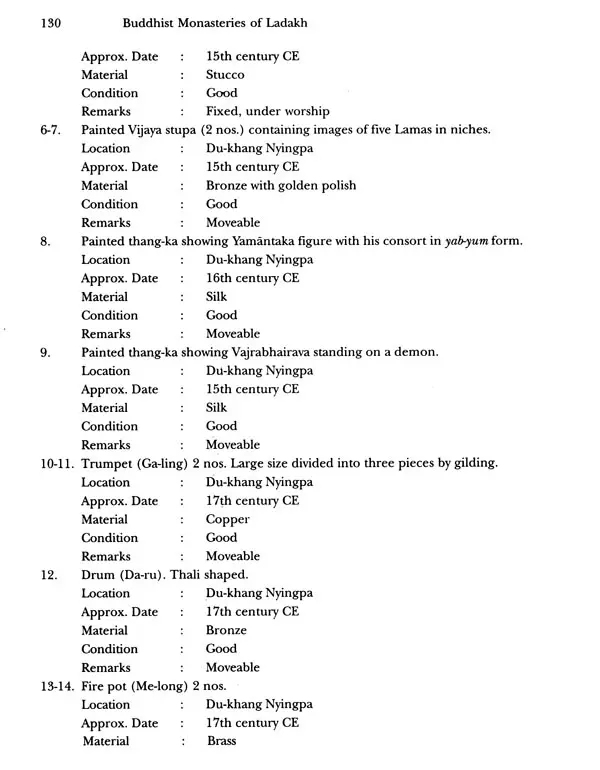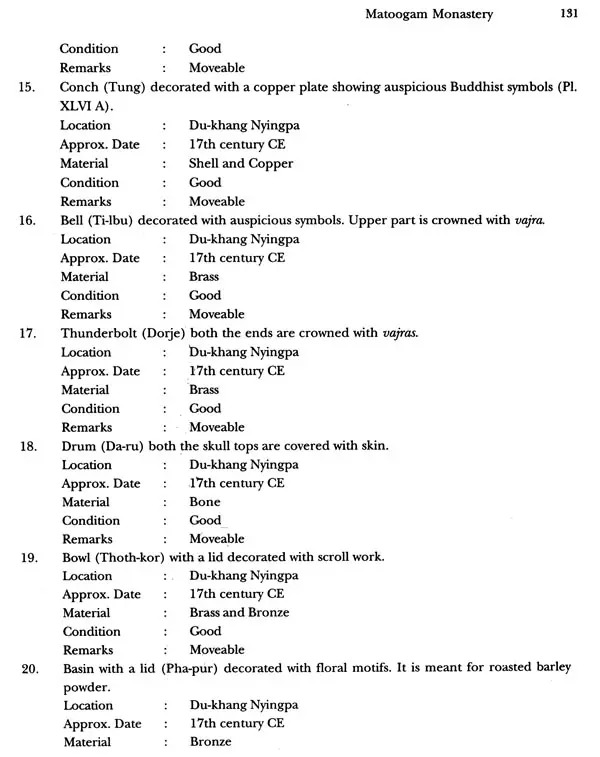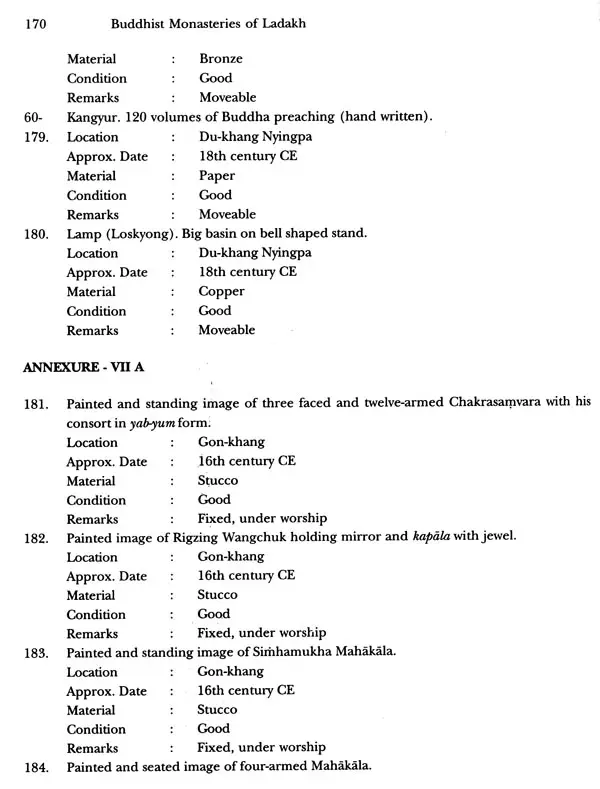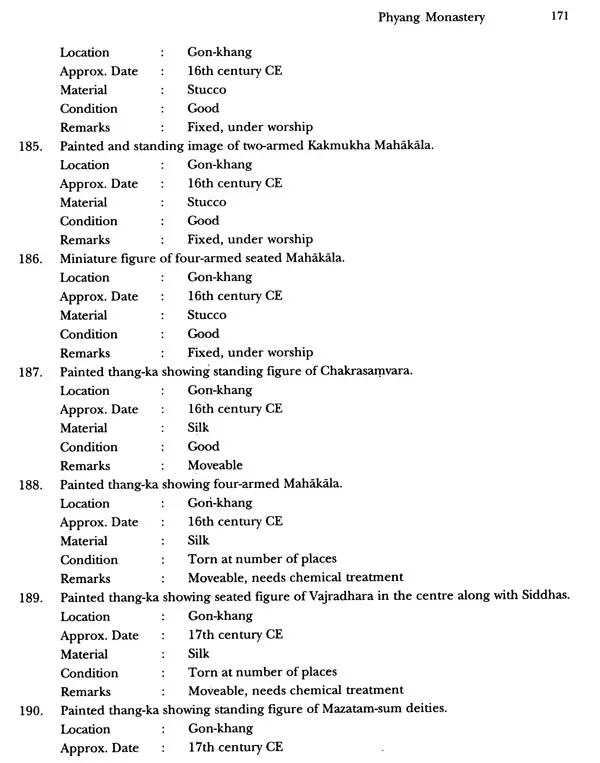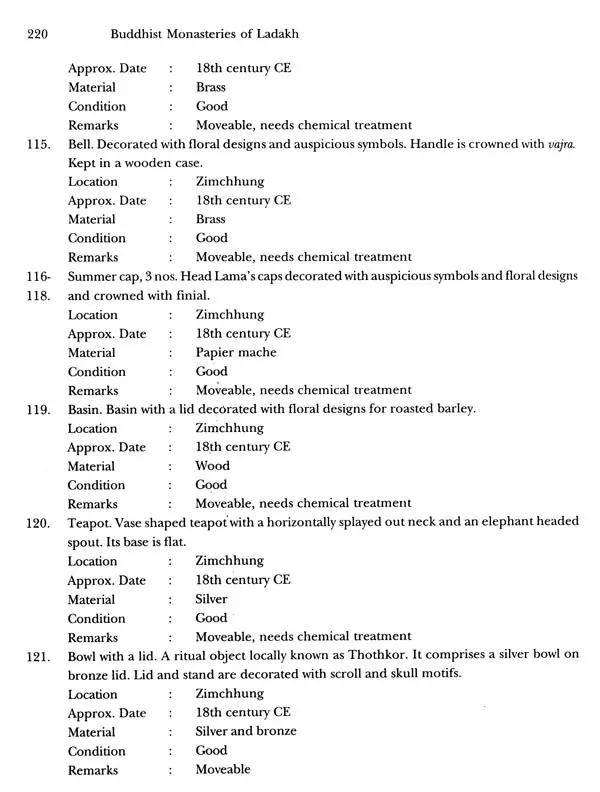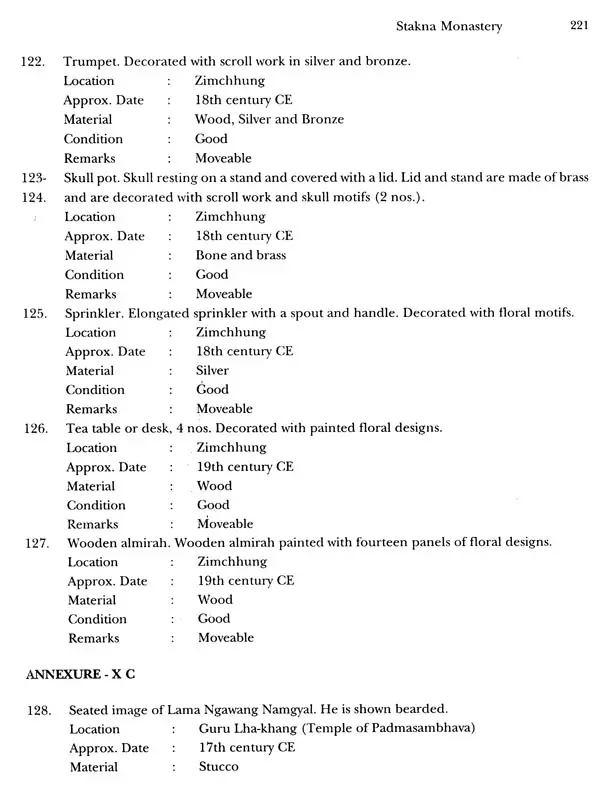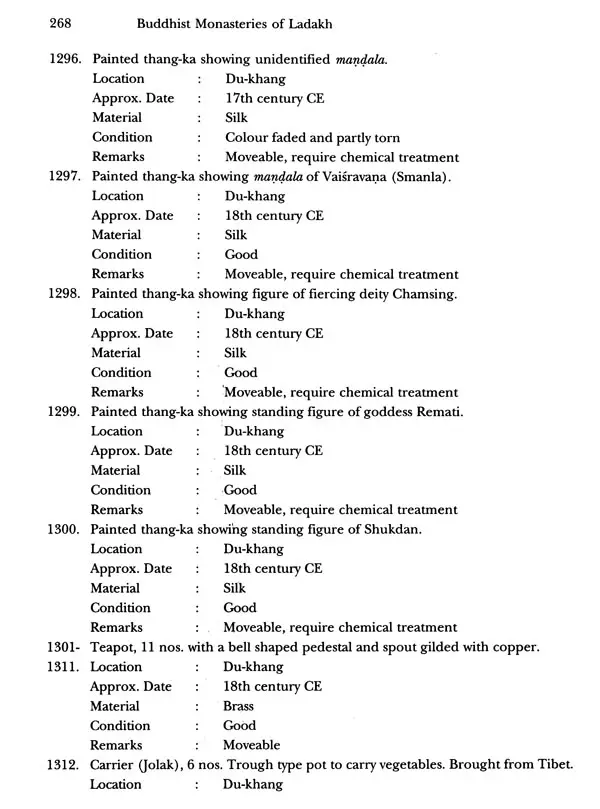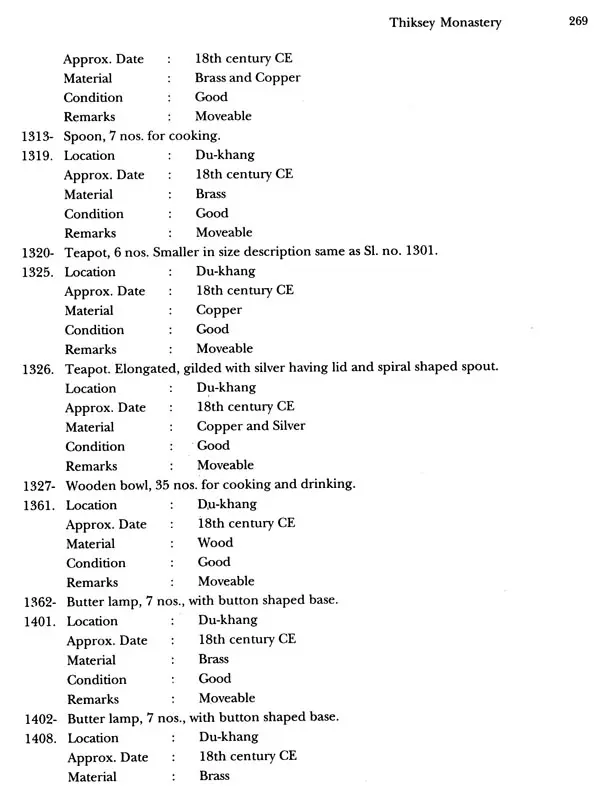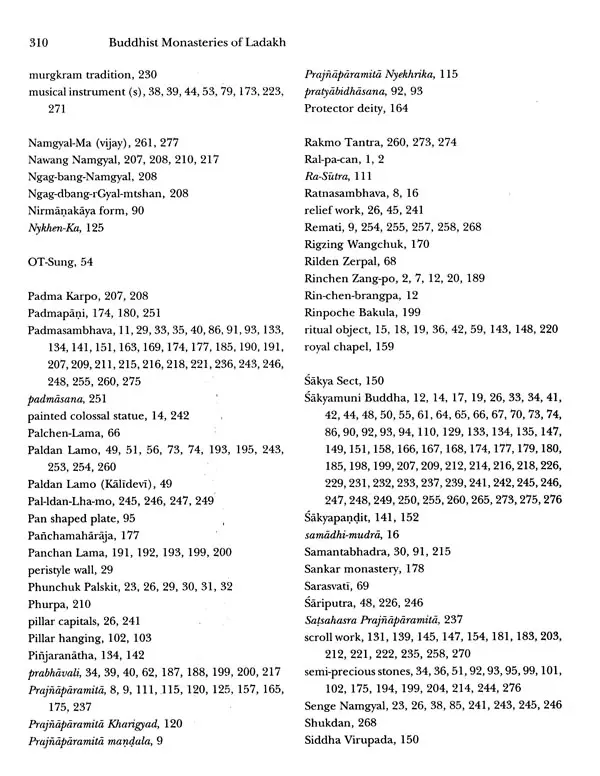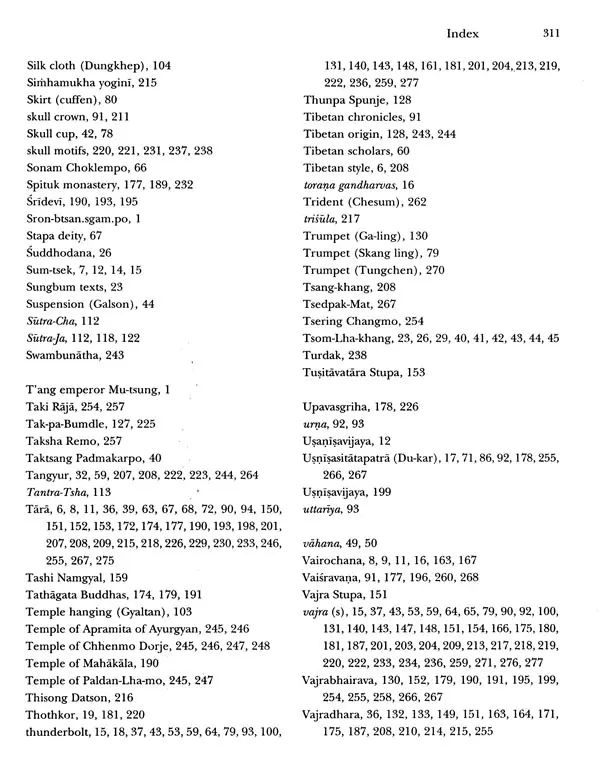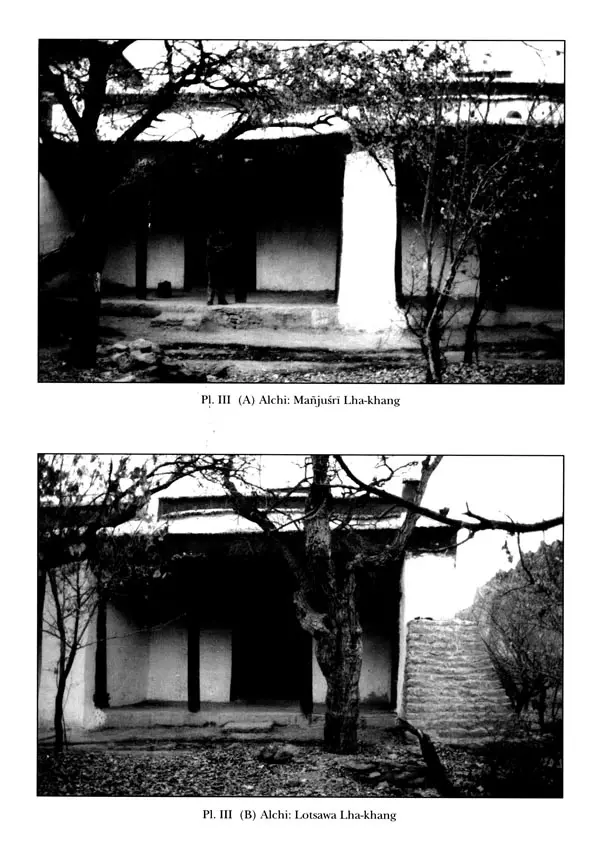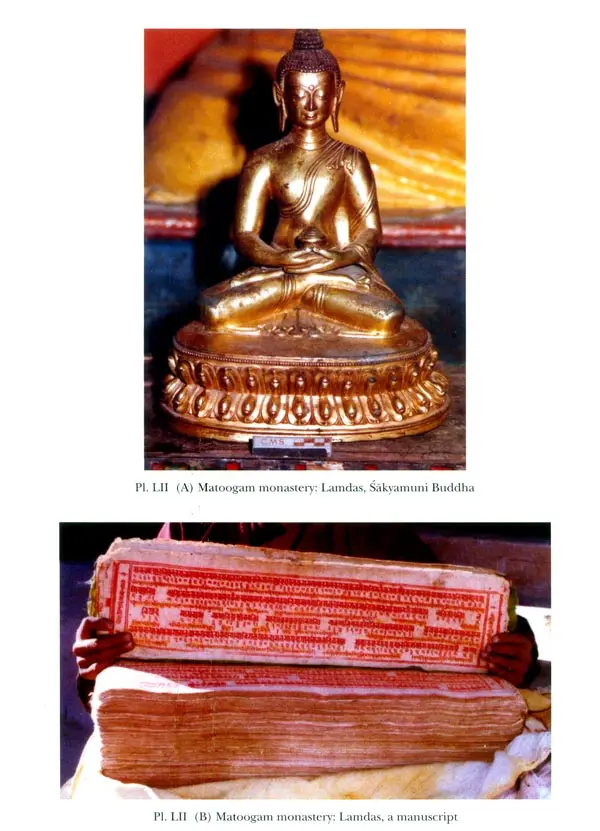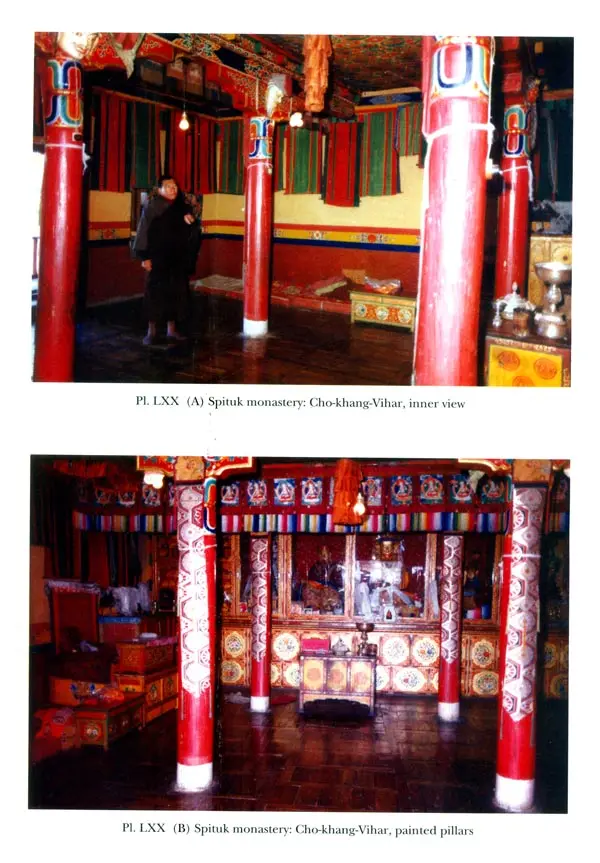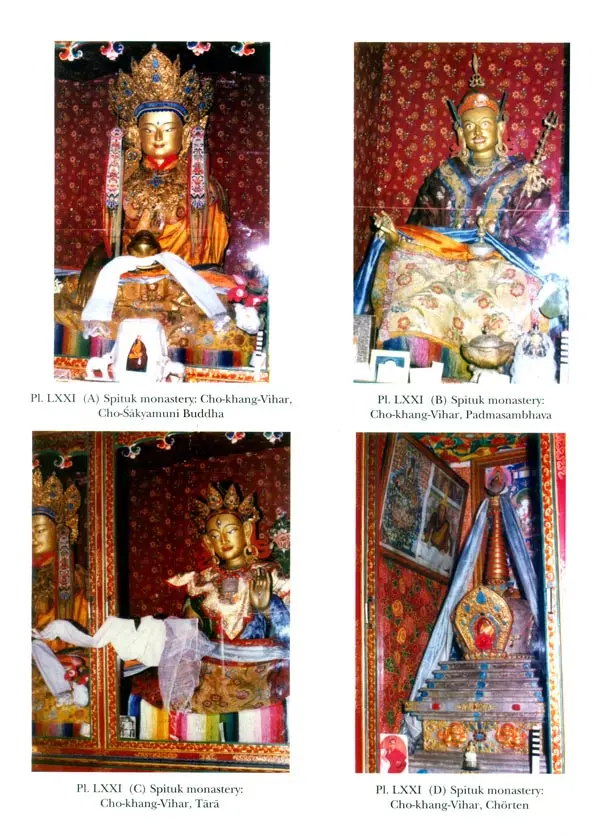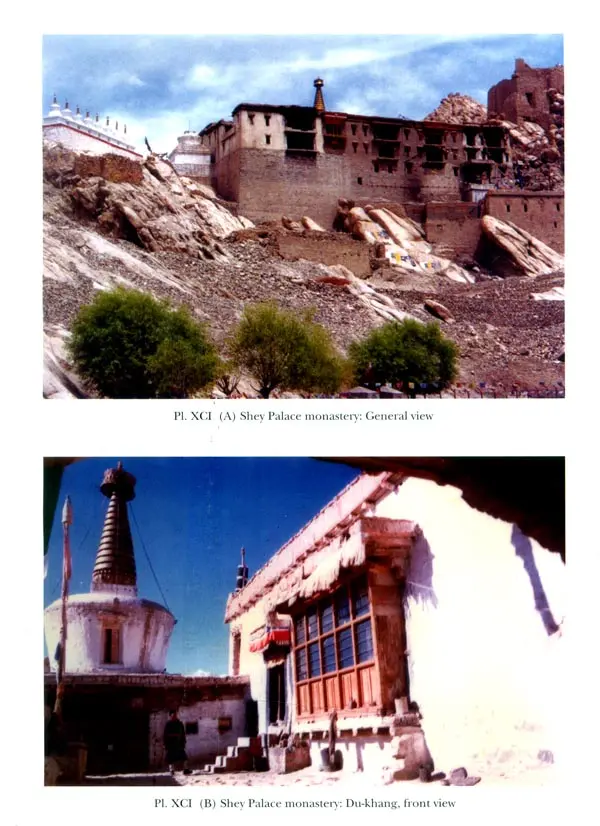
Buddhist Monasteries of Ladakh
Book Specification
| Item Code: | UAE698 |
| Author: | R.C. Agrawal |
| Publisher: | Sharada Publishing House, Delhi |
| Language: | English |
| Edition: | 2013 |
| ISBN: | 9788192698304 |
| Pages: | 430 (Throughout Color and B/w Illustrations) |
| Cover: | HARDCOVER |
| Other Details | 11.00 X 9.00 inch |
| Weight | 1.64 kg |
Book Description
From 1975-85, large number of tourists visited Ladakh and created an inquisitiveness and interest in the Tibetan art and artifacts. Dozens of Kashmir is and locals opened kiosks and started selling local handicrafts. In the process replicas of thang-kas and ritual objects were also sold in the market. This period of ten years of commercial activity in the art objects started posing a threat and it was felt necessary by the government to support the monasteries financially and other institutions to undertake the safety and protection measures for the cultural heritage of Ladakh. For quite a considerable period this Endeavour of government did not yield any tangible results, but definitely laid the beginning of a dialogue between monasteries and government.
Government institutions initiated study and preservation of various monasteries and inculcated a sense of significance in the minds of Lamas and other concerned. ' The present study is a molecule attempt in understanding the monasteries and the objects housed therein.
Much more remains to be done in different parts of Ladakh to assess the enormous wealth of art, architecture and literature. Hope future scholars may take forward what has been done in the present study.
He has been closely associated with many academic bodies and has published research papers on art, archaeology, paintings and rock art. He is widely travelled and member of ICOM, ICOMOS and other academic bodies.
In his career he has served as Director (Monuments), Joint Director-General, Institute of Archaeology, Member Secretary, Indian Council of Historical Research, Pro-Vice Chancellor, National Museum Institute and Professor of Museology, Principal Director, Architecture Heritage Division, INTACH. Presently, he is a visiting faculty to Architectural Conservation Department (SPA), Institute of Archaeology, Archaeological Survey of India, National Museum Institute and President of Rock Art Society of India.
The first authentic work was done by Alexander Cunningham on the physical, statistical and historical aspects during the 19th century. Another European and a Moravian missionary Dr. A.H. Francke surveyed the Ladakh region on behalf of the Archaeological Survey of India. Francke's studies largely covered chronicles of Ladakh, Nubra and Zanskar region. He is the first person to study the inscriptions and engravings available in the various parts of Ladakh. Next person who did commendable work is Giuseppe Tucci whose collection has become a photographic archive on various aspects of Indo-Tibetan culture. The studies by David L. Snell grove and Thaddeus Skorupski in 1977 opened a new vista of information on the Archaeology of Ladakh region. The studies of Buddhist monasteries in Western Himalayas by Romi Khosla, a professional architect provides a different dimension on the art and architecture of the Ladakh.
The present study largely centered on various Buddhist monasteries spread over in a large area of Ladakh and other structures and the antiquarian remains. Attempt has also been made to inventories hundreds of art objects and other religious artifacts housed in various monasteries. An Endeavour has also been made to make condition assessment of monasteries and suggest remedial measures for their better preservation.
The arrangement of the study has not been attempted according to the chronology of the structures, but a balance has been maintained according to the significance of the structures located on the bank of river Indus.
The present attempt is not comprehensive in its nature as there were inbuilt constraints in examining and photography of the objects. I hope future researches, if done, in collaboration with Buddhist Gonpa Associations and academic institutions many more details will be known which are still blurred under the shadow of ignorance. The data enumerated here was initially collected during the years 1986-1991, 1996-1997, 2002-2005 and 2008-2010. Many hands have helped in gathering such vast information and I owe with gratitude their co-operation.
With the death of Ral-pa-can in 836/8 the empire of peace and prosperities came to an end. The cordial relation between China and Tibet came to an end Ral-pa-cari's brother Glan- dar-ma came on the throne. He started persecution of Buddhist and Buddhist establishment at the behest of Bonpos and rebellious ministers. This led to hatching of a conspiracy by the supporters of Ral-pa-can and a monk killed him.
This aroused commotion in the Tibetan society and a process of fragmentation of consolidated empire started. The different tribes who had adopted Buddha dharma and Buddhist way of life united and Bonpos and their followers formed the other group. Clashes became an order of the day. Rebellious captured the eastern part of Tibet. This impacted the religious practices and monasteries and created a void of central authority. In absence of central authority prominent nobles and Buddhist teachers started moving from central Tibet towards western Tibet. This led to establishment of small principalities in the western Tibet. In this process grandson of Glan-clar-ma, Nima played an important role and founded a new dynasty Mnahri also known in history as Guge dynasty. This new dynasty included Guge, Purang and Ladakh. Nima-mgon dispatched twenty-one talented youths to Kashmir for learning Buddhism and Vajrayana, of them Rinchen Zang-po was one of them.
Rinchen Zang-po was born in a village of Guge province of western Tibet. From his early age he behaved unusually and always remained thoughtful. Realizing his temperament, his parents entrusted him to learned teacher Legspa Zango, who named the boy Rinchen Zang-po and ordained him.
In no time young novice showed extraordinary skill in learning Buddhist texts. After several years of learning, Rinchen Zang-po returned to Naris as Buddhist scholar. The king and the citizens of Nari gave him a grand reception on his arrival to home land and recognized him as the spiritual teacher of the land. Rinchen Zang-po started translation of work of Buddhist texts from Sanskrit to Tibetan and built several temples and stapes in the land of La-tags.
Ladakh known in Tibetan La-tags 'Land of many passes' is a mountainous area and situated.
to the north of the country (fig. 1). It covers approximately an area of 1,00,000 sq. km. and lies between two highest mountain ranges of the world. The Himalayan range .in the south and the Karakoram range in the north.
It is bounded on the north of Karakoram and Kuenlum ranges, on the east and south by the Chinese districts of Kudok and Chumurti, on the south by Lahul and Spiti valley and on the west by Khumarg, Chorbat and the area of Askardu. It is divided into five regions Leh, Nubra, Rupshu, Zanskar and lower Ladakh. Leh is the administrative Headquarter of 'Ladakh and is situated in the big flat valley of the Indus river.
Nubra falls on the north and north-eastern side. The lower Ladakh lies along the road which joins Ladakh with the Kashmir valley (fig. 2).
Book's Contents and Sample Pages
